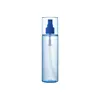What's inside
What's inside
 Key Ingredients
Key Ingredients

 Benefits
Benefits

 Concerns
Concerns

 Ingredients Side-by-side
Ingredients Side-by-side

Water
Skin ConditioningPinus Densiflora Leaf Extract
AntimicrobialButylene Glycol
HumectantNiacinamide
SmoothingPentylene Glycol
Skin Conditioning1,2-Hexanediol
Skin ConditioningChamaecyparis Obtusa Leaf Extract
Skin ConditioningOriganum Vulgare Leaf Extract
Skin ConditioningSalix Alba Bark Extract
AstringentCinnamomum Cassia Bark Extract
MaskingLactobacillus/Soybean Ferment Extract
Skin ConditioningPortulaca Oleracea Extract
Skin ConditioningScutellaria Baicalensis Root Extract
AstringentCentella Asiatica Extract
CleansingEthylhexylglycerin
Skin ConditioningAllantoin
Skin ConditioningBetaine
HumectantPanthenol
Skin ConditioningGlycoproteins
Skin ConditioningSodium Hyaluronate
HumectantHydrolyzed Hyaluronic Acid
HumectantSodium Acetylated Hyaluronate
HumectantAsiaticoside
AntioxidantAsiatic Acid
Skin ConditioningMadecassic Acid
Skin ConditioningMadecassoside
AntioxidantGluconolactone
Skin ConditioningOctyldodeceth-16
EmulsifyingSalicylic Acid
MaskingCitric Acid
BufferingDiethoxyethyl Succinate
SolventCitrus Limon Fruit Extract
MaskingCitrus Nobilis Oil
MaskingLavandula Angustifolia Oil
MaskingEucalyptus Globulus Leaf Oil
PerfumingJuniperus Mexicana Oil
MaskingPinus Palustris Oil
MaskingDisodium EDTA
Limonene
PerfumingLinalool
PerfumingWater, Pinus Densiflora Leaf Extract, Butylene Glycol, Niacinamide, Pentylene Glycol, 1,2-Hexanediol, Chamaecyparis Obtusa Leaf Extract, Origanum Vulgare Leaf Extract, Salix Alba Bark Extract, Cinnamomum Cassia Bark Extract, Lactobacillus/Soybean Ferment Extract, Portulaca Oleracea Extract, Scutellaria Baicalensis Root Extract, Centella Asiatica Extract, Ethylhexylglycerin, Allantoin, Betaine, Panthenol, Glycoproteins, Sodium Hyaluronate, Hydrolyzed Hyaluronic Acid, Sodium Acetylated Hyaluronate, Asiaticoside, Asiatic Acid, Madecassic Acid, Madecassoside, Gluconolactone, Octyldodeceth-16, Salicylic Acid, Citric Acid, Diethoxyethyl Succinate, Citrus Limon Fruit Extract, Citrus Nobilis Oil, Lavandula Angustifolia Oil, Eucalyptus Globulus Leaf Oil, Juniperus Mexicana Oil, Pinus Palustris Oil, Disodium EDTA, Limonene, Linalool
Water
Skin ConditioningButylene Glycol
HumectantAlcohol Denat.
AntimicrobialSea Water
HumectantMandelic Acid
AntimicrobialSodium Citrate
BufferingSolanum Melongena Fruit Extract
Skin ConditioningBetaine Salicylate
AntimicrobialLactobionic Acid
BufferingMorus Bombycis Root Extract
Skin ConditioningPrunus Persica Kernel Extract
MoisturisingDipotassium Glycyrrhizate
HumectantLupeol
Skin Conditioning1,2-Hexanediol
Skin ConditioningGlycerin
HumectantMenthol
MaskingPolyglyceryl-10 Laurate
Skin ConditioningPolyglyceryl-10 Myristate
Skin ConditioningEthylhexylglycerin
Skin ConditioningCitric Acid
BufferingDisodium EDTA
Water, Butylene Glycol, Alcohol Denat., Sea Water, Mandelic Acid, Sodium Citrate, Solanum Melongena Fruit Extract, Betaine Salicylate, Lactobionic Acid, Morus Bombycis Root Extract, Prunus Persica Kernel Extract, Dipotassium Glycyrrhizate, Lupeol, 1,2-Hexanediol, Glycerin, Menthol, Polyglyceryl-10 Laurate, Polyglyceryl-10 Myristate, Ethylhexylglycerin, Citric Acid, Disodium EDTA
 Reviews
Reviews

Ingredients Explained
These ingredients are found in both products.
Ingredients higher up in an ingredient list are typically present in a larger amount.
1,2-Hexanediol is a synthetic liquid and another multi-functional powerhouse.
It is a:
- Humectant, drawing moisture into the skin
- Emollient, helping to soften skin
- Solvent, dispersing and stabilizing formulas
- Preservative booster, enhancing the antimicrobial activity of other preservatives
Butylene Glycol (or BG) is used within cosmetic products for a few different reasons:
Overall, Butylene Glycol is a safe and well-rounded ingredient that works well with other ingredients.
Though this ingredient works well with most skin types, some people with sensitive skin may experience a reaction such as allergic rashes, closed comedones, or itchiness.
Learn more about Butylene GlycolCitric Acid is an alpha hydroxy acid (AHA) naturally found in citrus fruits like oranges, lemons, and limes.
Like other AHAs, citric acid can exfoliate skin by breaking down the bonds that hold dead skin cells together. This helps reveal smoother and brighter skin underneath.
However, this exfoliating effect only happens at high concentrations (20%) which can be hard to find in cosmetic products.
Due to this, citric acid is usually included in small amounts as a pH adjuster. This helps keep products slightly more acidic and compatible with skin's natural pH.
In skincare formulas, citric acid can:
While it can provide some skin benefits, research shows lactic acid and glycolic acid are generally more effective and less irritating exfoliants.
Most citric acid used in skincare today is made by fermenting sugars (usually from molasses). This synthetic version is identical to the natural citrus form but easier to stabilize and use in formulations.
Read more about some other popular AHA's here:
Learn more about Citric AcidDisodium EDTA plays a role in making products more stable by aiding other preservatives.
It is a chelating agent, meaning it neutralizes metal ions that may be found in a product.
Disodium EDTA is a salt of edetic acid and is found to be safe in cosmetic ingredients.
Learn more about Disodium EDTAEthylhexylglycerin (we can't pronounce this either) is commonly used as a preservative and skin softener. It is derived from glyceryl.
You might see Ethylhexylglycerin often paired with other preservatives such as phenoxyethanol. Ethylhexylglycerin has been found to increase the effectiveness of these other preservatives.
Water. It's the most common cosmetic ingredient of all. You'll usually see it at the top of ingredient lists, meaning that it makes up the largest part of the product.
So why is it so popular? Water most often acts as a solvent - this means that it helps dissolve other ingredients into the formulation.
You'll also recognize water as that liquid we all need to stay alive. If you see this, drink a glass of water. Stay hydrated!
Learn more about Water